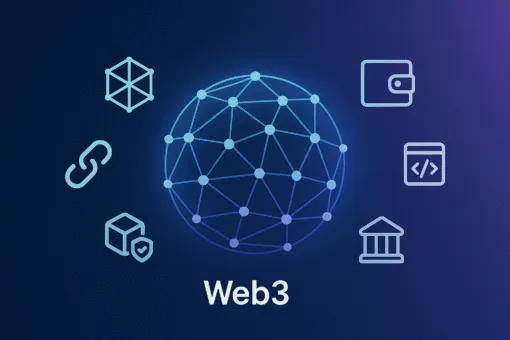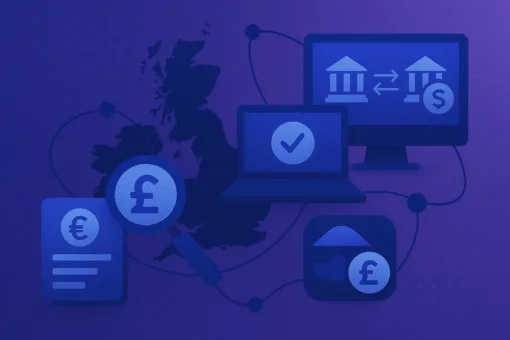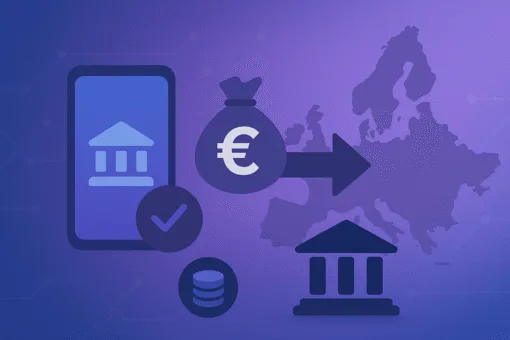Embedded finance is transforming industries by incorporating financial services directly into non-financial platforms. This integration allows businesses to offer banking-like services, enhancing customer experience and simplifying transactions. Consumers benefit from seamless access to payments, loans, and insurance, all within familiar digital environments.
This shift is redefining traditional banking structures. Fintech firms and non-financial businesses are partnering to innovate and unlock new revenue streams. The rapid adoption of embedded finance signals a fundamental change in financial services distribution.
What is Embedded Finance?

Embedded finance refers to the integration of financial services within non-financial applications. It enables businesses to offer banking features such as payments, lending, and insurance directly through their platforms without requiring customers to engage with traditional banks.
Examples are everywhere. Ride-hailing apps provide instant driver payouts, reducing wait times for earnings. E-commerce platforms offer Buy Now, Pay Later (BNPL) options, improving purchasing power. SaaS providers integrate payment solutions for seamless transactions.
Fintech innovations drive this trend. Application Programming Interfaces (APIs) and open banking frameworks allow businesses to embed financial products without building banking infrastructure from scratch. This flexibility enables companies to scale quickly and adapt to customer needs.
As embedded finance evolves, it goes beyond convenience. It is reshaping how financial products are accessed and distributed, influencing customer behavior across industries.
How it Benefits Businesses
Businesses use embedded finance to simplify transactions and create a more engaging customer experience. By integrating financial services within their platforms, they eliminate unnecessary steps, making payments, loans, and financial services easier to access.
Retailers leverage BNPL services to allow customers to split payments, increasing affordability and boosting sales. Subscription-based businesses use automated embedded payments, reducing failed transactions and improving customer retention.
Beyond user experience, embedded finance generates new revenue streams. Businesses earn through transaction fees, lending interest, and insurance commissions, strengthening financial stability and diversifying income sources.
One major advantage is customer retention. When financial services are built into a platform, users are less likely to seek external providers. This results in higher engagement and loyalty, driving long-term business success.
The Impact on Traditional Banking

Embedded finance is decentralizing financial services, reducing reliance on traditional banks. Consumers increasingly interact with financial services through non-bank platforms, reshaping industry dynamics.
Banks must adapt or risk disintermediation. Many institutions now offer Banking-as-a-Service (BaaS) solutions, enabling non-financial businesses to integrate banking features while leveraging bank infrastructure.
Some banks are forming partnerships with fintech firms. Rather than competing, they are collaborating to extend their reach and remain relevant. However, institutions that fail to adapt may lose direct customer relationships and become backend service providers rather than primary financial institutions.
Legacy banking systems pose another challenge. Many traditional banks struggle with outdated infrastructure, making API-driven integrations difficult. Banks that fail to modernize may lose ground to agile fintech competitors offering embedded solutions.
Regulatory and Security Challenges
The rise of embedded finance introduces regulatory complexities. Non-financial companies offering financial services must comply with anti-money laundering (AML), know-your-customer (KYC), and data privacy laws. Compliance becomes even more critical as financial interactions shift beyond traditional banking institutions.
Data security is a top concern. Embedded finance relies on API integrations, increasing cybersecurity risks. Data breaches or fraud could undermine trust, making strong encryption, fraud detection, and authentication mechanisms essential.
Regulators are working to adapt. Compliance frameworks are evolving to address risks associated with non-traditional financial service providers. As embedded finance becomes more widespread, businesses must prioritize regulatory adherence, risk management, and secure data handling.
Failure to comply with financial regulations could result in penalties, legal challenges, and reputational damage. Companies embedding financial services must work closely with regulatory bodies to ensure compliance and long-term sustainability.
Future Trends in Embedded Finance

Embedded finance will continue expanding across industries, integrating financial services into everyday experiences. Sectors such as healthcare, real estate, and education are expected to adopt embedded financial solutions.
Healthcare providers may offer embedded financing plans for treatments, allowing patients to access flexible payment options. Real estate platforms could integrate mortgage lending and rental deposit management, streamlining property transactions. Universities and online learning platforms might introduce student financing solutions to improve educational accessibility.
Artificial Intelligence (AI) and machine learning will play a critical role in the evolution of embedded finance. AI-powered lending models will offer real-time credit assessments and instant loan approvals. Automated fraud detection will enhance security, making transactions safer.
Blockchain and decentralized finance (DeFi) could further disrupt the embedded finance space. Smart contracts may automate financial transactions, reducing reliance on intermediaries and increasing transaction efficiency. The rise of DeFi platforms could lead to transparent, decentralized financial ecosystems embedded directly within digital services.
The future of embedded finance will be hyper-personalized, with financial services adapting to user behavior and preferences. Businesses that embrace these trends will gain a significant competitive edge in the evolving financial landscape.
Conclusion
Embedded finance is reshaping industries by making financial interactions more seamless, enhancing customer experience, and unlocking new revenue opportunities. The integration of financial services within non-financial platforms is not just a trend, it is the future of financial service distribution.
For businesses, adopting embedded finance is no longer optional, it is a strategic necessity. Companies that integrate financial solutions effectively will increase customer engagement, drive loyalty, and position themselves as industry leaders.
Traditional banks must innovate, collaborate, and modernize to remain competitive. Open banking, API-driven models, and BaaS will be essential to ensuring their continued role in financial services.
Regulatory frameworks must evolve alongside technological advancements to ensure compliance and security without stifling innovation. As embedded finance expands, businesses must be proactive in understanding compliance requirements and cybersecurity risks.
The financial ecosystem is undergoing rapid transformation. Companies that embrace embedded finance will drive the next wave of digital financial innovation, unlocking new possibilities and reshaping customer expectations.
















